Recent Articles
Popular Makes
Body Types
13 Halloween Safe Driving Tips
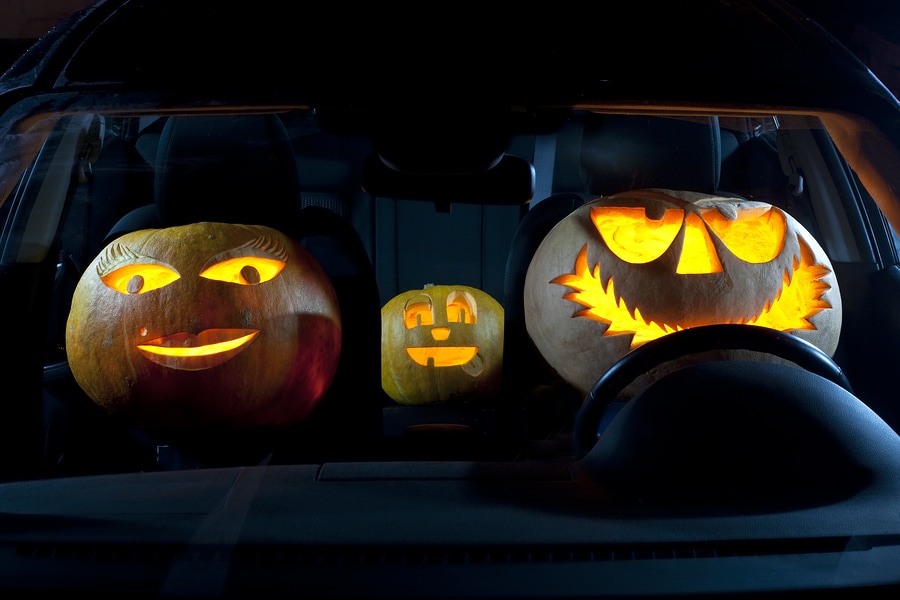
jack-o-lantern
According to statistics cited by SafeKids Worldwide, on average, children are more than twice as likely to be hit by a car and killed between 4:00 pm and 8:00 pm on Halloween than at any other time of the year. These 13 Halloween driving tips will help you avoid being the driver of one of those cars. In general, over 80 percent of child pedestrian fatalities happen at non-intersection locations. Further, the maturity level of children under 10 makes them less aware of road dangers and more susceptible to being hit by a car. Add darkness, black costumes, and free candy to the mix and you've got a recipe for tragedy.
Drive Slowly—No, Even MORE Slowly
On a normal day, the posted speed limit in most neighborhoods is 25 miles per hour. On Halloween, it's a very good idea to set your personal speed limit at 15 miles per hour. The slower you drive through the neighborhood, the faster your car will stop if it becomes necessary to do so suddenly. That quick stop could be the difference between hitting a child and coming up just short of hitting one. Also, at lower speeds, if colliding with a child proves to absolutely unavoidable, you'll be less likely to kill them because the impact will be less severe than it would be if you were driving faster.

Vigilance Is Key
When driving through neighborhoods, be especially vigilant, as kids can and will dart out of nowhere—straight into the path of your car. Anxiously romping from house to house, they aren't thinking about cars, they're thinking about candy. So as a driver, you have to think for them. This means you want to avoid adjusting your radio, answering your phone, or doing anything that might take your eye off the road for even a second. That moment you choose to reset your climate control system could be the moment a little kid goes tearing across the street to get to the next house—and runs right out in front of you. If you're watching the road, the kid makes it. If you're not...
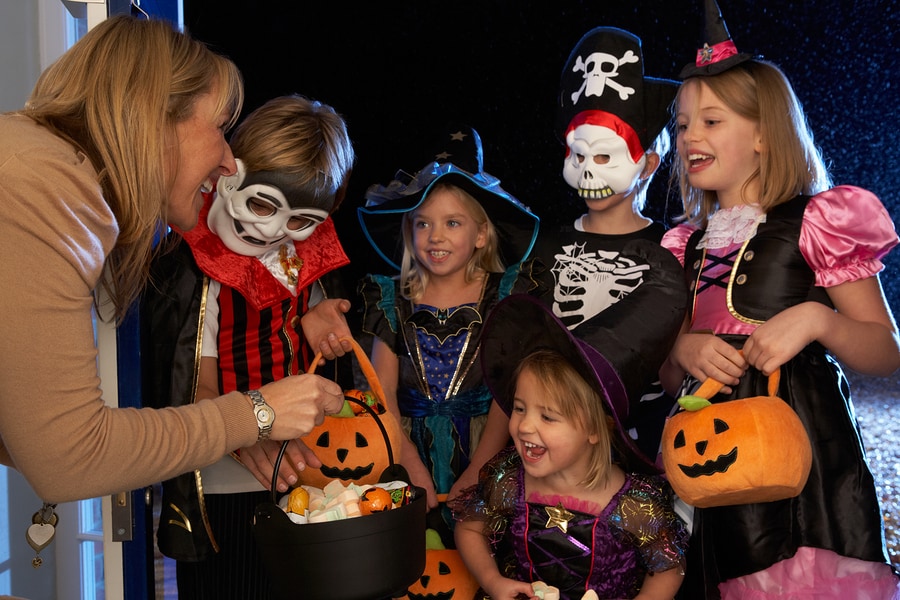
Be Extra Careful Around Stopped Cars
Many people will very foolishly stop their cars and let kids out without looking into their rear view mirrors to see if another car is approaching. If you're driving along a residential street on Halloween and a car stops in front of you, rather than going around it right away, wait a couple of beats to see if kids are getting out. In most cases, the children exiting will be so anxious to get out to get to that next doorbell, they're not going to be looking to see if a car is coming either. They'll fling the door open, hop out and run across the street. If you're watching for stopped cars and anticipating this, they're golden. If you're not, their evening—and yours—could well take a very bad turn.
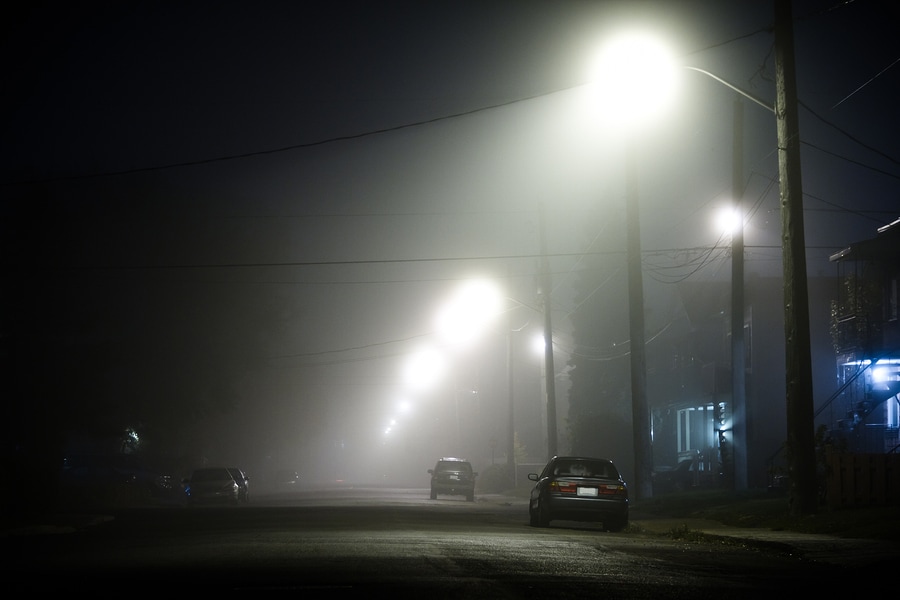
Keep Your Eyes Moving
Your peripheral vision is one of the key tools in your defensive arsenal when driving in general, and even more so on Halloween. Consider every sudden movement a potential child, and you'll likely make it through the neighborhood without hitting one. Remember, Halloween costumes have a tendency to be dark colored, so any movement you see out of the corner of your eye—the one you might be tempted to pass off as being just a shadow—could well be a kid dressed in dark clothing. With your eyes moving constantly, scanning the environment very carefully, you're more likely to pick up on the movement before it becomes a kid frozen in your headlights.

Don't Count On Crosswalks
The fact you're in the middle of a block doesn't mean you can cruise along obliviously. Remember, statistics show most juvenile pedestrian fatalities happen at non-intersection locations. In other words, these children aren't thinking about going to the corner and using the crosswalk. They're crossing wherever and whenever the mood strikes them (no pun intended). The only thing they're looking for is the next porch light. Once their eyes are affixed on their next target, they'll likely ignore the street between them and the candy. Crossing at an intersection does not occur to them. On Halloween, kids are much more likely to cross in the middle of the block than at crosswalks. Pay attention.
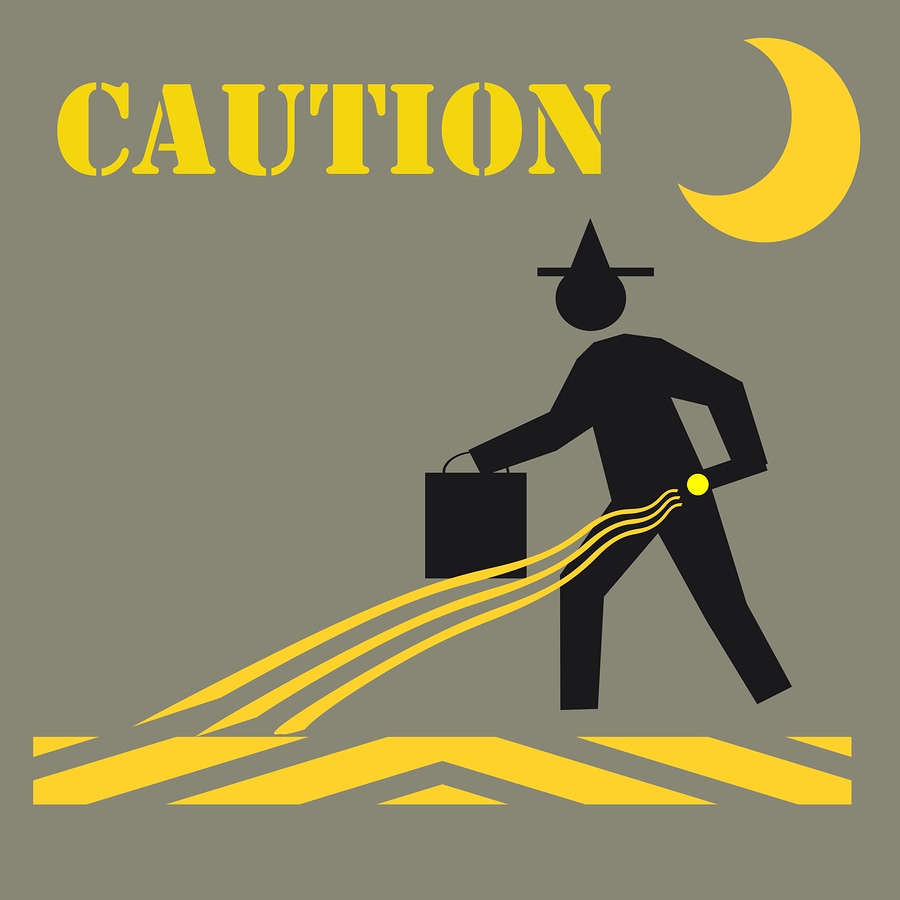
Driveways Can Be Deadly Too
You’ve a steady stream of trick or treaters coming to your house. So many, you realize it's early in the evening and your candy supply is running low. So you decide to drive to the grocery store to pick up some more before you run out. Backing your car out of the driveway, you feel a thump and hear screaming. Yeah, you just backed over a kid crossing your driveway. All of the dangers aren't out on the road; you have to be especially careful when you drive across a sidewalk. Again, kids aren't going to be paying attention, plus they’ll figure they're safe because they're on the sidewalk. Running from house to house, they'll run across driveways too.
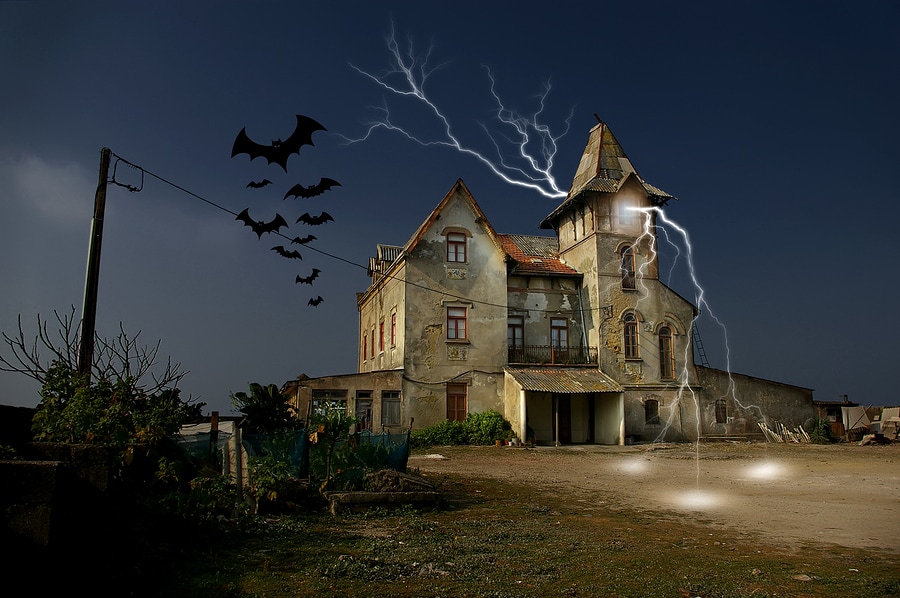
Put Your Mask On AT The Party
If you're going to a Halloween party in costume and it involves a mask, wait until you arrive at the party to put on the mask. Do not wear it while driving. Many masks have a tendency to impair your peripheral vision, which—as we stated before—is one of the key tools in your arsenal of defenses. Masks can also be uncomfortable, tempting you to adjust them as you drive. The moment you choose to adjust your mask could well be the critical moment a child chooses to rocket into the path of your car. It's much safer to leave the mask off until you get to the party.
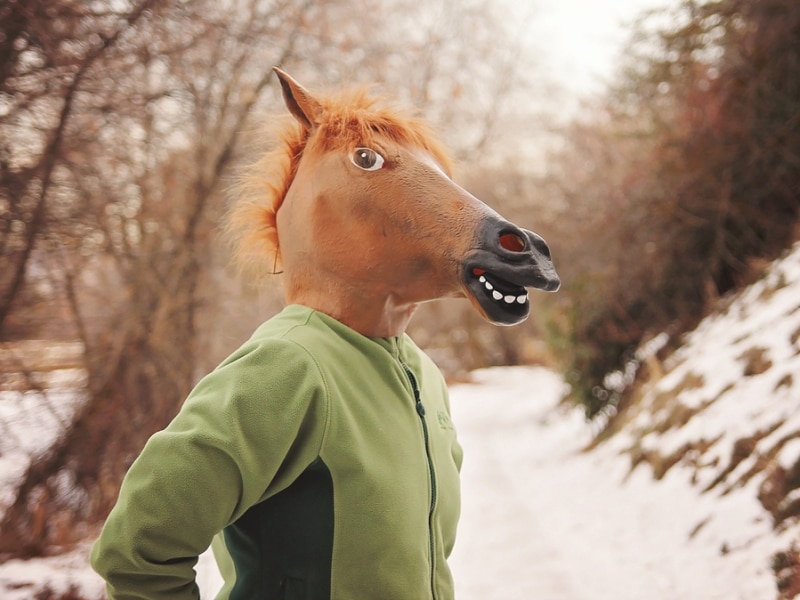
Use Mirrors And Hazard Lights
If you're driving a group of kids on Halloween, before you start out, tell them they are only to open the doors and get out of the car when you say it is OK for them to do so. Further, tell them to look for themselves before opening the doors, even after you have told them it is OK. Whenever you stop to let them out, make sure you first look in your mirrors before you give them permission to open the doors. Turn on your hazard signals so drivers following you know something's about to happen. Then look very carefully to ensure no cars are approaching. Once you've looked twice and are satisfied it's safe, only then should you give them the OK to exit.
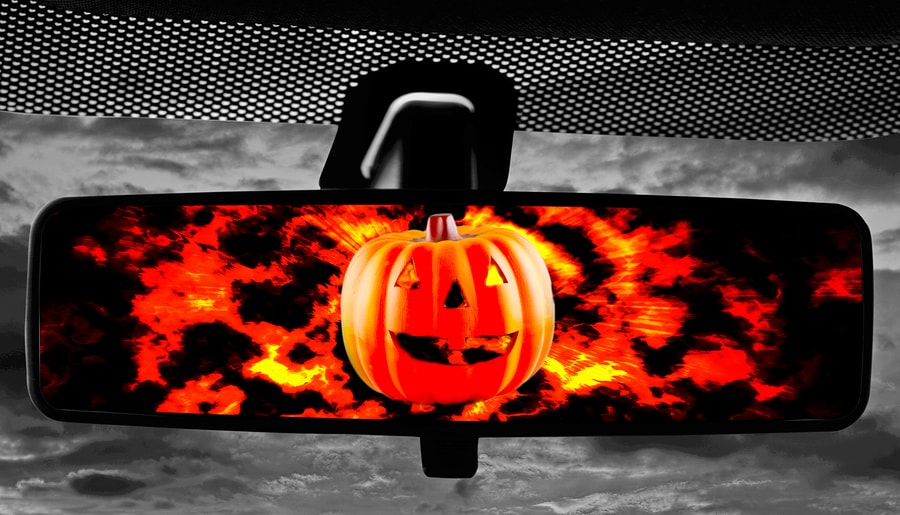
Do Everything You Can To Optimize Their Visibility
Ideally, all children's Halloween costumes would be in lighter colors. For example, you could dress them up as the snowman from "Frozen", or some other character with a lighter colored costume. Of course, it's Halloween, so there will be vampires, Frakensteins, and zombies too. It won't ruin the costume if you put reflective tape around the upper arms and just below the knees of the outfit. Alternatively (or additionally), you could make the child a necklace and bracelets out of glow sticks. The idea here is to improve their visibility so drivers can see them more readily. Flashlights are good too; but if you equip children with flashlights, tell them not to shine them into the eyes of drivers.
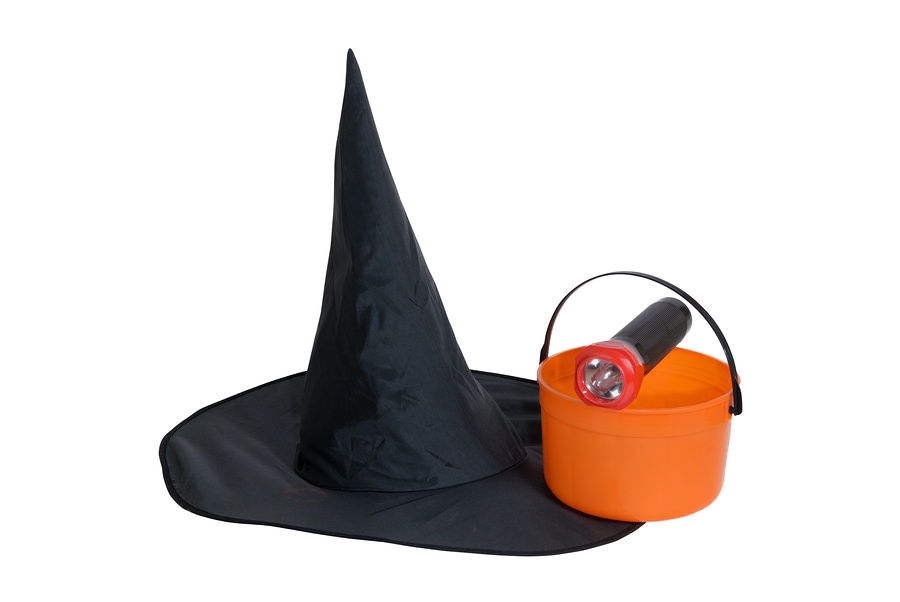
Tell Them To Slow Their Roll—The Candy Will Be There
Kids have a tendency to think all the candy run out before they get there if they don't rush from house to house. This sets them up to make life-threatening decisions out of anxiety. Remind your kids there will be plenty of candy at every house, so they'll be more likely to walk from place to place, take their time crossing streets, and make better overall decisions in this regard. Admonish them to walk rather than run, remind them to look before walking into the street, and be very careful when walking across driveways—even if they don't see a car coming.
